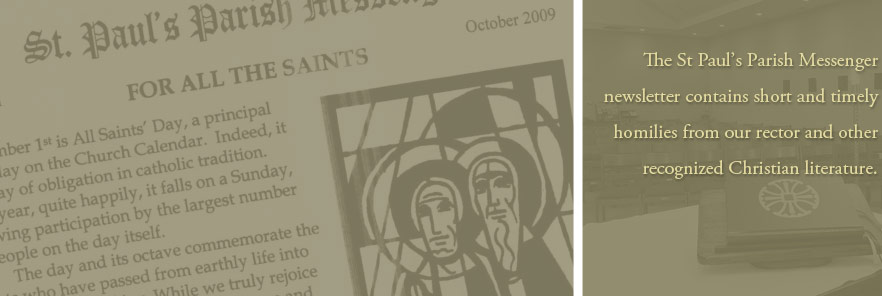Scripture allows of no difference between saints and souls. Even so, tradition has caused some distinction to be drawn between the two terms.
Early on the former was synonymous with martyr, one who witnessed to Christ even unto death, and such persons were usually memorialized in local congregations on the anniversary of their death.
By the fifth century there was a feast in the East of “all saints” on Friday of Easter Week, and by the eighth century it was likewise celebrated in Rome, principally in the former Roman Pantheon, then dedicated for Christian worship as the Church of Saint Mary and All Martyrs.
Soon after, Pope Gregory moved the celebration to November 1 as a holy day of obligation. From earliest time, those who endured torture for the faith, the ‘confessors,’ were also treated with great respect, many of whom were acclaimed as saints by local congregations after death. The theology and piety behind it all sought simply to emphasize the bond between those who had gone to be with Christ in heaven after trusting in him even unto death and those still witnessing steadfastly in his Name on earth.
Likewise from earliest times, Christians remembered the souls of all their dead. Third century African theologian, Tertullian, even spoke of an intermediate place of rest where the faithful awaited final judgment. This concept led to the thought that some sort of purification was necessary before seeing God, so the notion of a kind of purgatory.
In the Eastern Orthodox Church this state was viewed as one needing prayer and growth, whereas in the Roman Church it was looked upon as confining and requiring release. Whatever, since the eleventh century the feast for such souls has been set as November 2nd, with the prayer in the Roman Church that they “may rest in peace.”
Because of Protestant distaste for purgatory and Masses for the dead growing out of what they perceived as misguided tradition contrary to Scripture, the day has been largely one of optional observance in Anglicanism. This latter reaction is rather strange, for its originator, Tertullian, was in fact champion also of the notion that Scripture and tradition are coterminous, i.e. two sides of the same coin so to speak, a key element in Anglican thought. The readings and prayers are guides to the theology behind All Souls’ Day: Christ is the hope of the living and the dead!
May the faithful face death with fixed hope in him! Actually then, the Feast of All Souls compliments that of All Saints, proclaiming that all who love God are united in communion with Christ, whether living or dead.
Attention, response, and attendance will enable us to give God, Christ, and all faithful departed
souls our best remembrance on these occasions.
– JR Hiles

